- News
- Reviews
- Bikes
- Components
- Bar tape & grips
- Bottom brackets
- Brake & gear cables
- Brake & STI levers
- Brake pads & spares
- Brakes
- Cassettes & freewheels
- Chains
- Chainsets & chainrings
- Derailleurs - front
- Derailleurs - rear
- Forks
- Gear levers & shifters
- Groupsets
- Handlebars & extensions
- Headsets
- Hubs
- Inner tubes
- Pedals
- Quick releases & skewers
- Saddles
- Seatposts
- Stems
- Wheels
- Tyres
- Tubeless valves
- Accessories
- Accessories - misc
- Computer mounts
- Bags
- Bar ends
- Bike bags & cases
- Bottle cages
- Bottles
- Cameras
- Car racks
- Child seats
- Computers
- Glasses
- GPS units
- Helmets
- Lights - front
- Lights - rear
- Lights - sets
- Locks
- Mirrors
- Mudguards
- Racks
- Pumps & CO2 inflators
- Puncture kits
- Reflectives
- Smart watches
- Stands and racks
- Trailers
- Clothing
- Health, fitness and nutrition
- Tools and workshop
- Miscellaneous
- Buyers Guides
- Features
- Forum
- Recommends
- Podcast
feature
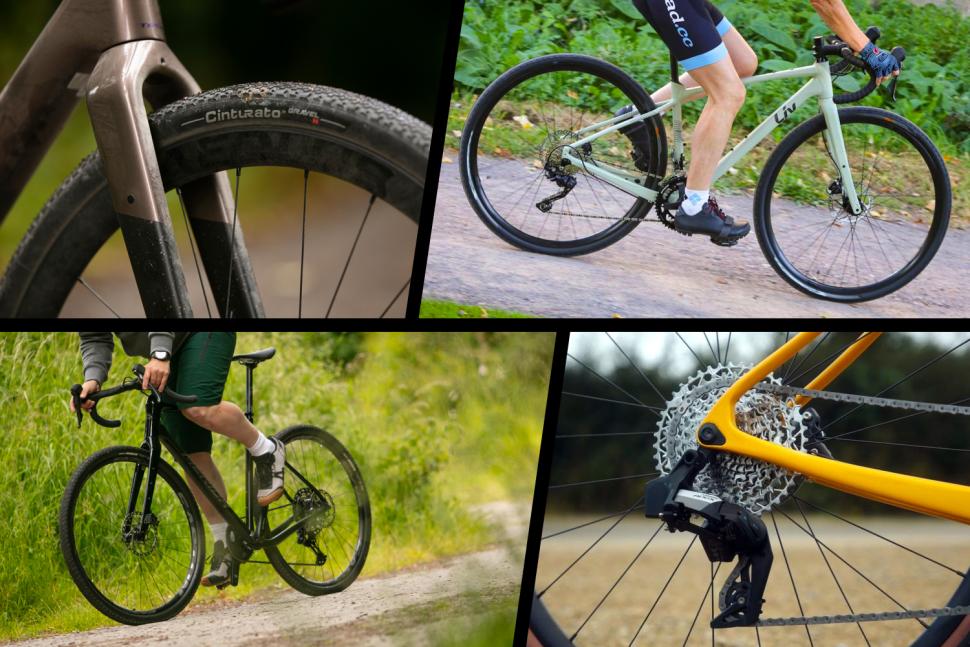 Why a gravel bike could be the only bike you need March 2025 (credit: road.cc)
Why a gravel bike could be the only bike you need March 2025 (credit: road.cc)Why a gravel bike could be the only bike you need — the pros and cons of using a gravel bike as your only bike
Gravel bikes have moved very quickly from being the latest bike-related craze to a significant part of most bike companies' ranges. Designed for everything from smooth roads to rugged off-road adventures, could a gravel bike be the only bike you need for commuting, training, and exploring? Let’s get into the pros and cons...
Gravel bikes have been around for some time now, but have seen a surge in popularity in recent years. We tested one of the first gravel-specific bikes back in 2013 - the Kinesis Tripster ATR. At the time, a drop-bar bike with a longer wheelbase, more relaxed geometry, and clearance for high-volume tyres was a pretty new concept.,
Until that point, drop bar bikes designed for rough surfaces were primarily cyclocross bikes, built for fast handling and usually designed around the 33mm maximum tyre size that the UCI imposed on races. In terms of the geometry and ride characteristics, the closest thing to a gravel bike from years gone by was perhaps the touring bike, and some of these could take wider volume tyres than typical road bikes for brief off-road forays.
By the time the Tripster ATR arrived, bikes like the Kona Rove and Salsa Warbird -among the first commercially available gravel bikes - had already hit the market. However, the Kinesis Tripster is a bike that was there at the very birth of the gravel movement.
Fast forward to today, and gravel bikes are no longer a niche category. UK sales reached approximately 30,000 in the 12 months leading up to July 2024 - a 15% increase compared to the previous year, according to The Bicycle Association, which tracks both in-store and online sales.
With their growing popularity and versatility, you might be considering a gravel bike as your next bike, or even selling your other bikes and committing to just one. While they’re designed for mixed terrain, gravel bikes aren’t limited to gravel riding and could become your commuter or training bike. Let’s dive into the pros and cons of making a gravel bike your one and only bike.
Pros
1. Customisation
> How to customise your road or gravel bike
A big positive of gravel bikes is that the possibilities to customise them are endless, with multiple mounting points allowing you to fit racks, mudguards, bottle cages, frame bags and more, making them ideal for long-distance rides, commuting or bikepacking.
Tyre choice adds another layer of adaptability. Swap in wider, knobbly tyres for off-road adventures or slicks for smoother, faster road riding.
For even greater flexibility, having two sets of wheels allows you to switch between a rugged off-road setup and a fast road machine with minimal effort.
2. Versatility
Repeating the same routes can become monotonous and that's where the versatility of a gravel bike makes it a great option, allowing you to explore new places and ride across different types of terrain without being restricted to just one.
With the ability to handle roads, fire tracks, grassy fields, and more, you can mix up your routes for more variety and even adapt your ride mid-way to suit changing weather or light conditions.
3. There's a bike for everyone
Whether you’re after a lightweight race bike or a model designed to carry plenty of accessories, there’s a gravel bike to suit every need, and the variety continues to grow.
Since most of us won’t fully utilise the specialised benefits of an aero- or climbing-specific bike, the diverse range of gravel bikes ensures you can find one that’s tailored to your style of riding.
4. Robustness and durability
Gravel bikes are specifically designed to withstand the challenges of off-road riding, which means they're built to be more resilient than traditional road bikes and the components are made with an emphasis on robustness and durability.
Gravel bike frames are designed to withstand vibrations and impacts from varied terrain encountered in gravel riding. Usually, a gravel bike will have a bit more frame material to ward off any lively rocks and particularly bumpy terrain.
Wheelsets often have sturdier rims and additional spoke counts to their equivalent road wheels to better cope with uneven road surfaces. This not only helps improve handling and stability on rough terrain but also ensures the wheels last longer, even when used on challenging surfaces.
5. Speed
When Jamie tested a gravel bike against a road bike, he was pleasantly surprised by how close the speeds were. Gravel bikes don't have to be slow and speed is somewhat determined by tyres and gearing, both of which can be relatively easily and affordably changed.
With fast rolling tyres and a gear range similar to a road bike, you can achieve comparable speeds on tarmac. While stock gravel setups may prioritise versatility, you have the flexibility to switch between tubeless and clincher tyres, slick or knobbly treads, and a variety of drivetrain options, including 1x, 2x, or even 3x setups across 11-speed, 12-speed, and even 13-speed systems.
6. Comfort
> Why wider tyres on road bikes are here to stay
Gravel bikes typically feature a more relaxed and stable geometry than road bikes, making them comfortable for longer rides.
They also accommodate wider tyres, which also enhances comfort, and to support these wider tyres, the seat stays and wheelbase have to get bigger. This can make a bike feel less lively and agile which may not be ideal for professional riders but it can be beneficial for less experienced riders by offering greater stability and control, especially on twisty descents.
7. More space at home!
Opting for a gravel bike as your one and only bike could mean saying goodbye to multiple other bikes, freeing up valuable space in your home, garage, or shed. Whether you're looking to simplify your setup or just make room for other things, a gravel bike can give you the versatility you need to tackle a variety of riding, particularly if you opt for two sets of wheels.
Cons
1. Weight
Gravel bikes tend to be heavier than road bikes when comparing similar materials, specs and price ranges. This added weight comes from components designed to be robust and durable as they need to survive the demands of off-road riding.
While this extra strength ensures longevity, it does result in a slight weight penalty compared to road-specific components. However, for most riders on an average ride, this difference is unlikely to be a deal-breaker.
2. Larger gaps between the gears
> Do wide ratio cassettes for lower gears have any place on performance road bikes?
Gravel bikes typically have larger gaps between gears making the jumps bigger compared to road bikes as they are designed to be used for a wide range of terrains. This can make it harder to find the right gear while maintaining a steady cadence.
Gravel bike gearing is also typically lower to handle off-road climbs, which may make it harder to maintain high speeds particularly on descents. As mentioned above, it is possible to switch up the gearing on your gravel bike to make it more suited to your riding styles.
3. Cost considerations
Gravel bikes tend to be pricier than budget road bikes, and like all bikes, high-end models can come with a premium price tag.
However, while the initial investment may be high, a gravel bike has the potential to replace multiple bikes in your garage, serving as a do-it-all option for road cycling, commuting, bike packing, and trail riding. In the long run, this could lead to savings on maintenance, storage space, and the cost of upgrading multiple bikes over time.
4. Not fully specialised for road or MTB riding
While gravel bikes can do a bit of everything, they won't always match what a road bike is capable of on the road or what a mountain bike can do off-road.
They can tackle a mix of surfaces but if you frequently ride either smooth tarmac or technical single track, you may find a road or mountain bike could better suit your needs offering more specific performance.
5. An all-road bike may be more suitable
All-road bikes are designed to bridge the gap between road and gravel bikes and while the line between them is still a bit blurry, all-road bikes may be more suitable as your one and only bike.
The primary consideration between a gravel or all-road bike is where you want to ride the bike. If gravel riding is limited near you or you prefer riding in comfort on the road, taking in the occasional canal towpath, then an all-road bike may be more suitable.
All-road bikes can handle some light gravel duties, and a gravel bike is still capable of being ridden on the road, but the gravel bike will be able to handle more off-road terrain, while the all-road bike will eat up miles with more efficiency.
To conclude
Choosing a gravel bike as your one and only bike comes with a range of advantages, including versatility, comfort, and the potential for customisation. Gravel bikes can handle a variety of terrains, from smooth tarmac to rough trails, making them an ideal option for those who want to explore diverse riding experiences. The ability to switch tyres, add accessories, and use the bike for multiple purposes from commuting to bikepacking adds to their appeal.
I've personally been using a gravel bike as my one bike to do it all this winter with some slick tyres on, and despite sticking to a 1x set-up, I haven’t ran out of gears on the club run.
However, there are some trade-offs. Gravel bikes can be heavier than road bikes, and the gearing may not be as optimal for high-speed road riding. Additionally, while gravel bikes excel at versatility, they aren’t always specialised enough for riders seeking peak performance in either road or mountain biking.
Would you consider using a gravel bike as your one and only bike? Let us know in the comments section below.
Emily is our track and road racing specialist, having represented Great Britain at the World and European Track Championships. With a National Title up her sleeve, Emily has just completed her Master’s in Sports Psychology at Loughborough University where she raced for Elite Development Team, Loughborough Lightning.
Emily is our go-to for all things training and when not riding or racing bikes, you can find her online shopping or booking flights…the rest of the office is now considering painting their nails to see if that’s the secret to going fast…
Latest Comments
- bikeman01 15 min 49 sec ago
Why do you think it was filmed by his dad? The article doesnt say that.
- ridein 1 hour 28 min ago
I wonder if you could use a Northwave shoe (w/Speedplay drilling) on the Ekoi pedal. Possibly using one Look pattern cleat hole and two Speedplay...
- Surreyrider 3 hours 11 min ago
I've worked in local government before and some really don't need any training for that - they're already masters!
- Rendel Harris 7 hours 8 min ago
They have here: results at 14.40. The aero bike was roughly fifteen seconds faster than a climbing bike on a descent of around 6 km, so about 3km/h...
- wtjs 7 hours 22 min ago
As I've also placed here the nutter Audi and white van drivers, I've decided to give those no-nonsense keep-the-country-moving BMW drivers a list...
- polainm 8 hours 25 min ago
100% this. Policing mentality is formed by social 'norms', and the cyclist witchhunting across social media is the UK norm. Close passing a person...
- David9694 9 hours 50 min ago
That's a clear 2 points awarded there, but I guess as there's now a 25% tariff you'll only get 1.5
- mark1a 10 hours 1 min ago
Fawkes Cycles is only local if you live near Oldham. That's nearly 300 miles away from me. Also, any retailer that doesn't participate in an...
- David9694 10 hours 3 min ago
Openreach under fire over delays to Amesbury cabinet repairs...
- Destroyer666 18 hours 1 min ago
Anodizing the aluminium is also for corrosion resistance and therefore enhances the longevity of the rims while this is not really a case for...
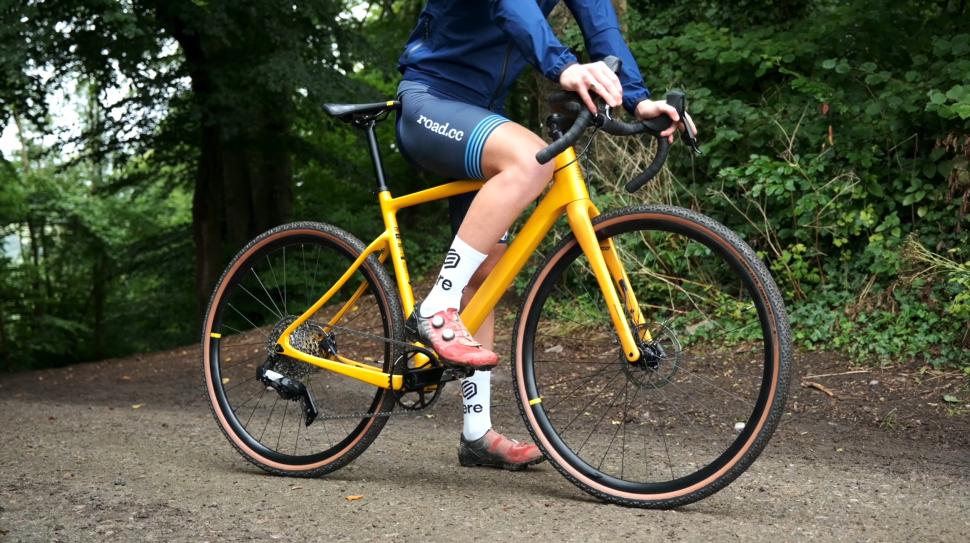

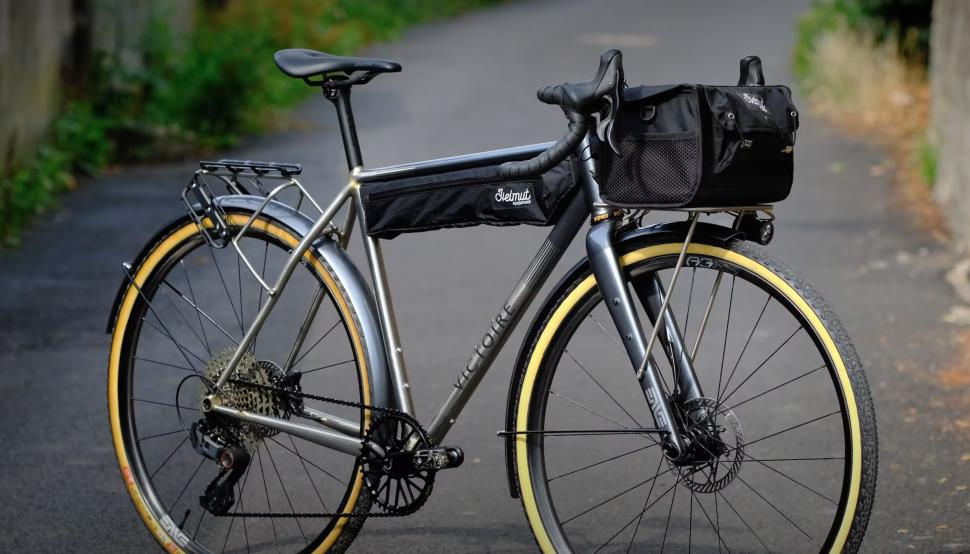
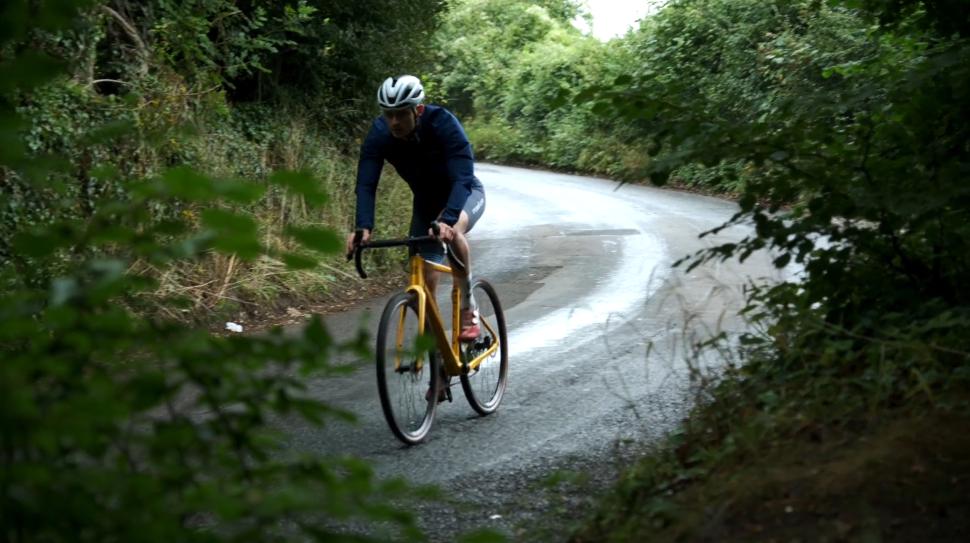
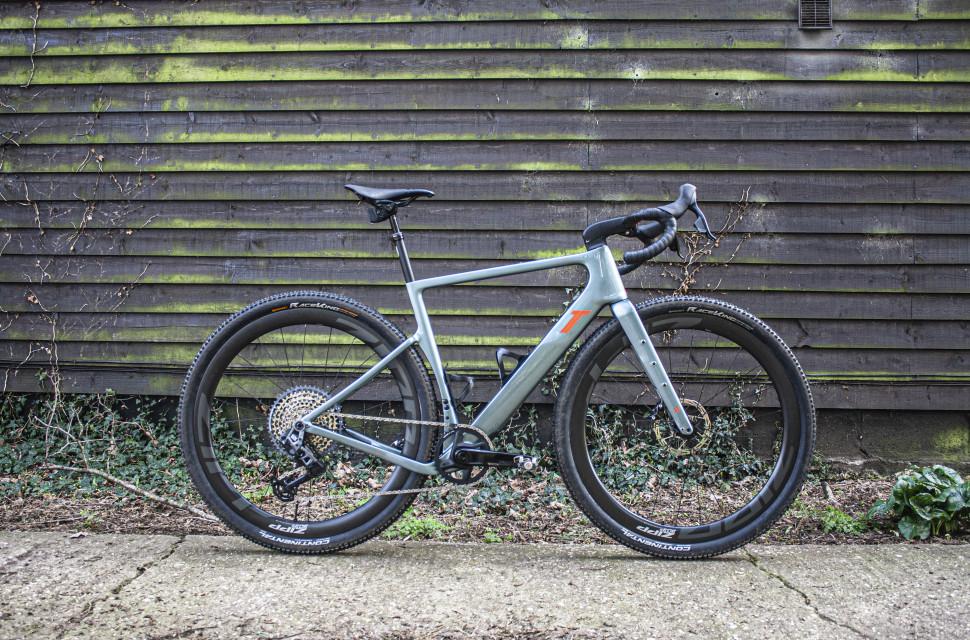
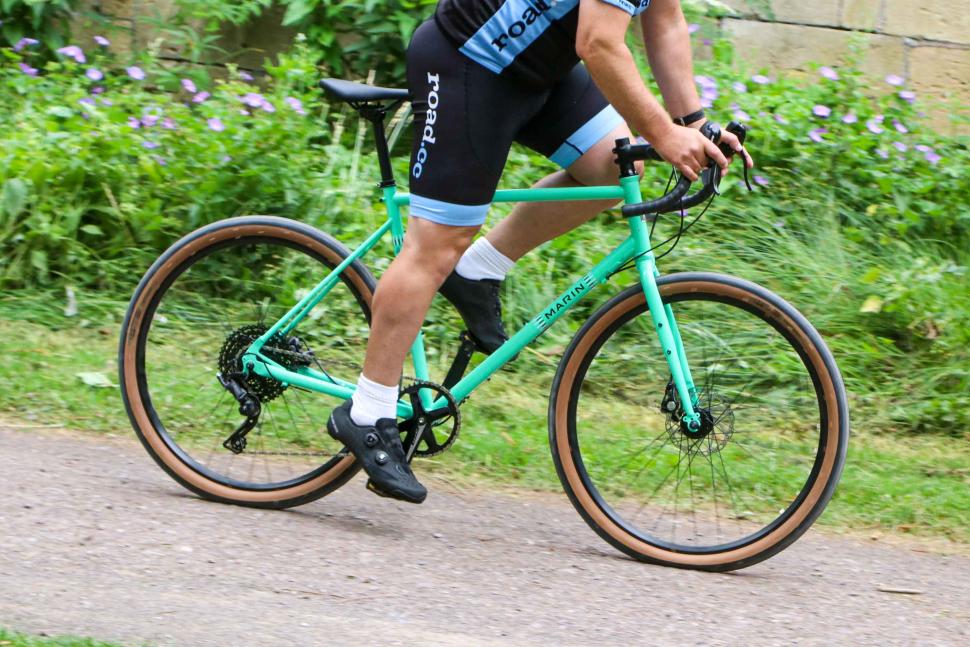
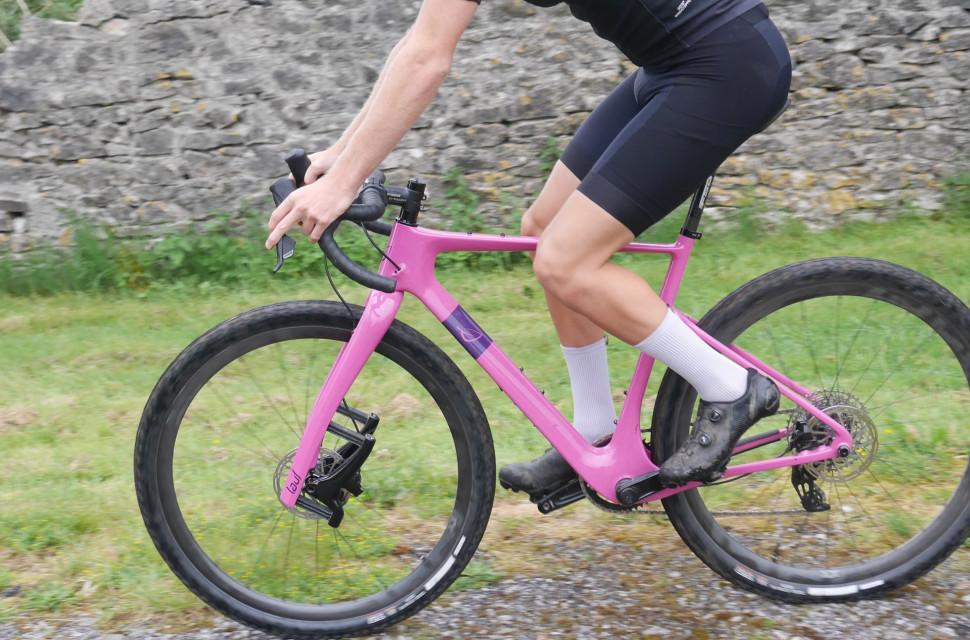
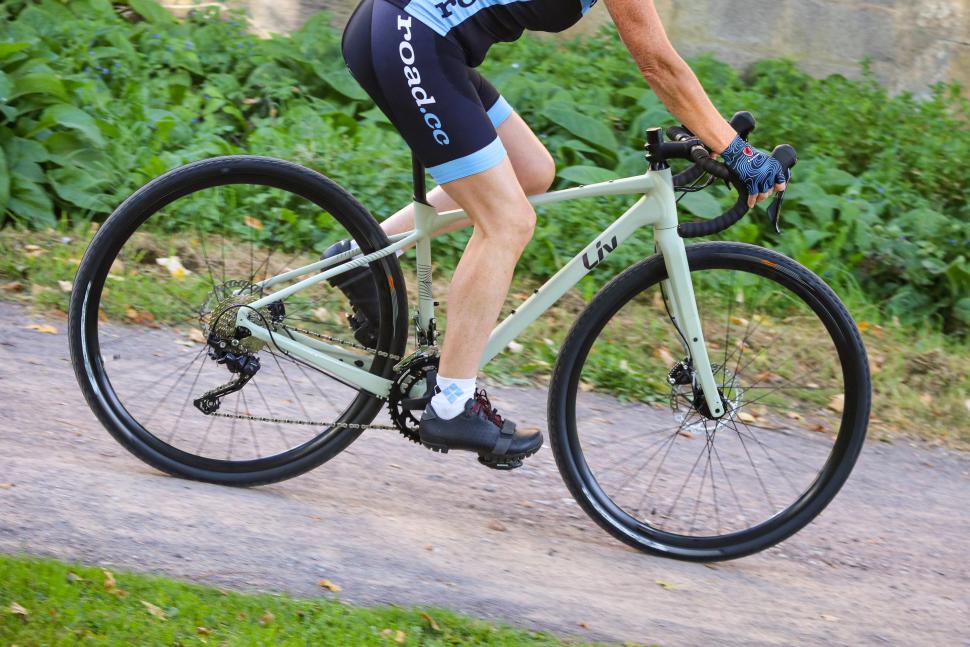
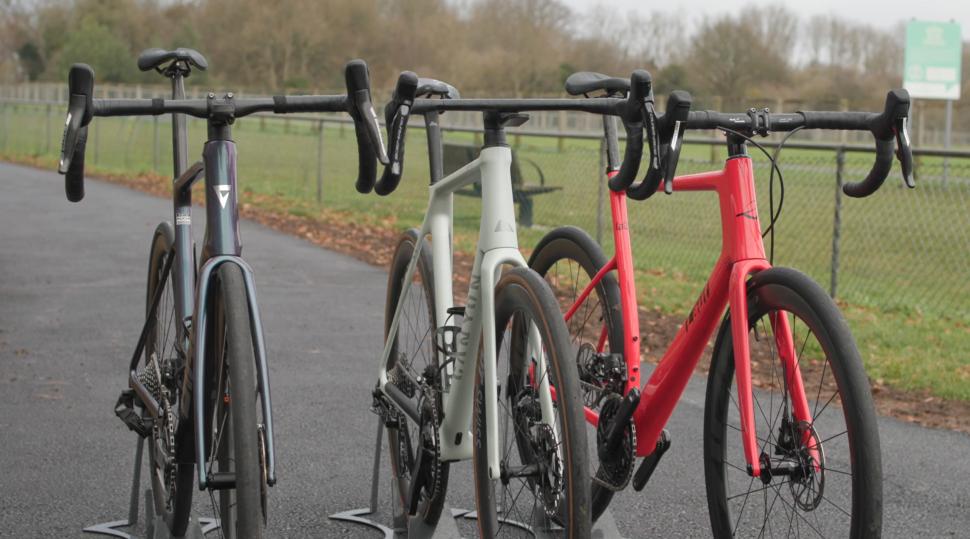
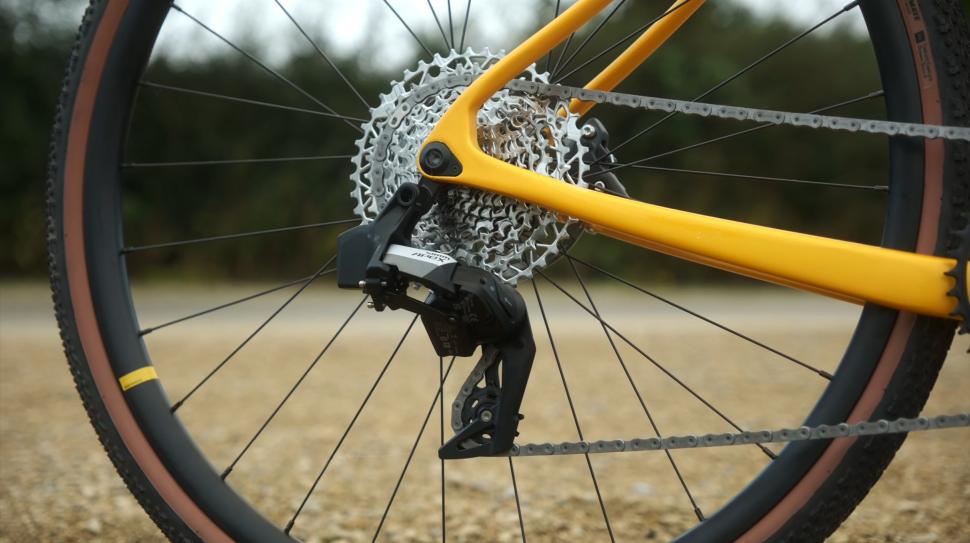
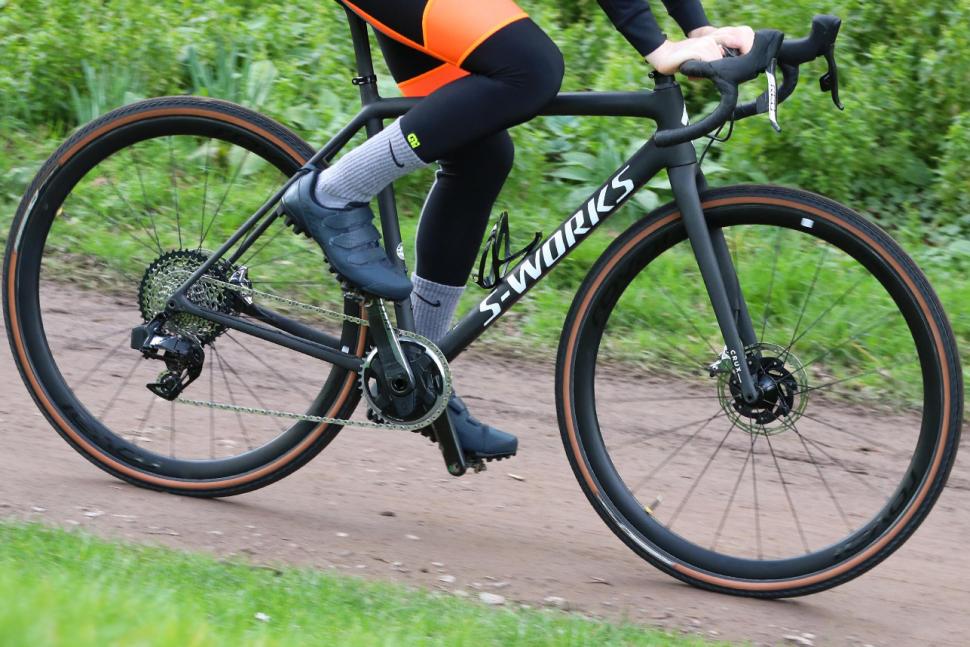

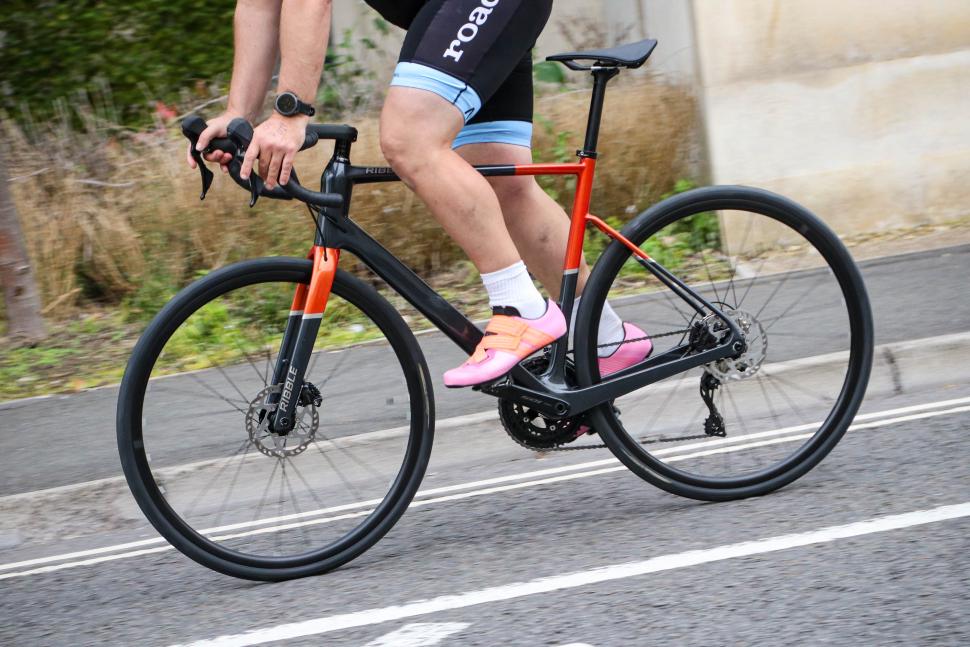

Add new comment
81 comments
In addition to my steel road bike, I got a titanium gravel bike built last year; really fancied a 'signature bike' and the bike mechanic I use was up for it (discussion on the subject had been going on for some time). My vision was more all-road but he pushed me more down the gravel route, but not too far; 1x11 Shimano GRX, tubeless (Maxxis Ramblers; 45mm front/40mm back) and I use SKS Speedrocker mudguards which come off v quick as necessary. It does give me more route options and I gave it a good workout in Tuscany going from single-track, gravel to nice smooth Italian tarmac. I've also done some overnight touring (staying in B&Bs) so loaded it up with a bit of luggage. No faster than my road bike but I could have a 2nd set of wheels with road tyres. I'm not a club rider but if I had a carbon super bike then that would still be way faster than the gravel bike. Not sure I'd want to rag it on the commute, especially through the winter, as I have a old hybrid with a rack; have to travel with a laptop and I'm not a fan of heavy rucksacks (over an hour commute). Have rigged the road bike with a detachable rack so it can do some of the summer commutes. For the budget/storage space concious, with 2 sets of wheels, it's definitely an option but with some compromises. Steel road bike is still great on a purely tarmac ride and trusty old commuter can happily sit locked up at the station, doesn't mind filthy winter conditions and the bike scrum of getting it on/off trains. The commuter is a USA built Cannondale that I've had for 25 years (a good few upgrades/changes); not sure I could sell it and watch someone else ride away on it!
I built a gravel bike last summer - a Ridley Kanzo Fast with Campag Ekar - and have used it through the winter with mudguards for club runs and the Festive 500 and so on.
The pluses: You can absolutely bomb down bits of NCNs surfaced in what looks like railway ballast that were a real struggle on a road bike in the past. The groupset is fabulous. The frame is very compliant and smooths out the road, almost too smooth. The steering feels sharpish and the wheelbase is not so long as to feel ponderous.
The minuses: Putting together a fully integrated bike (no visible cables) nearly brought me to tears! It's not lightweight (9kg). It felt a bit slow with 38mm Vittoria Terreno Zero gravel tyres, so I put 34mm Vittoria N.Ext slicks on it. Now it feels more like an all-road bike, but the slicks don't quite have enough grip for the bridleways I like to include in my rides. The Terreno Zeros were perfect for that, but felt slow on tarmac.
The jury is out on: It's no faster than my road bike on smoother gravel paths like Marriot's Way.
Question: Does anyone make a low rolling resistance tubed gravel tyre with a slick centre tread? That would be ideal.
The Michelin Power Gravel Adventure might fit your requirements, or the Vittoria Terreno Zero ("tubeless ready" but no reason you couldn't run it with a tube).
Thanks @Rendel, I'll look into them - they compare well with the Terreno Zeros that I already tried:
https://www.bicyclerollingresistance.com/cx-gravel-reviews/compare/miche...
the terreno zero do feel a bit sluggish if the pressure isnt spot-on .. otoh the grip level and puncture resistance are pretty good. and the hex-scale tread looks cool.
someone made a tyre with an inverted tread design, that might work better for you.
The Hutchinson Caracal Race TLR is the tire that you are looking for -- least rolling resistance available in a knobby tire.
https://www.bicyclerollingresistance.com/cx-gravel-reviews/hutchinson-ca...
If you can't fit those, Panaracer Cedric Gracias ( aka CG CX ) are brilliant, despite being fully-knobby and an older design.
One bike? That's a good one.
This is the Second time this article passes i believe..
However yes, i could do with the one bike for all concept.
I use a cyclocross bike (stevens ) for everything picking up the kids, commuting road and off-road.
But on the sunday morning group rides ,i use my ceepo mamba-r .
The group i'm in is all about speed, bikes are 2x s-works sl8's 2× canyon airroad, a supersix evo and a pinarello f12..
I'd struggle on my cross bike handling and drag are just not up to spec for flatout grouprides..
Cheers all !
A gentleman does not ride a 1x. For instance, can you imagine James Bond, Christopher Lee's Dracula or Raffles the "gentleman thief" riding a 1x? Of course not: the very idea is absurd.
Raffles, in fact, when he returned to England in disguise and lived at Ham Common, regularly riding the gravel trails in Richmond Park, rode, so his chronicler Bunny tells us, a Beeston Humber, so he not only used a single front chainring but was also riding a singlespeed.
I afraid you're wrong, old chap. The standard cycling industry definition of a '1x' requires that the chainset be a derailleur. But if you can find a reference to anyone calling a single speed a '1x' prior to SRAM's introduction of the XX1 groupset, you win the internet.
If you're going to be pernickety, probably best to get your front and rear derailleurs the right way round.
Only need to look to the Vielo range of 1x road or gravel bikes as your one stop solution - being specifically designed as 1x only, all the benefits, non of the cons (exception the gap between gears). I ride a R+1 with up to 32's, a 48t chainring and 44/10 cassette and it flies!
Tl;dr. Yes. Its a super versatile machine (espec in Scotland) although I'm not giving up my roadies anytime.
Is this Gravel CC?
Thought not.
Why would I want a gravel bike to ride on the road?
What a load of nonsense.
Have you seen the roads these days?
Yes the gravel paths are in a better state than most roads!
I'm mid-west American. This sentence made me want to scratch my brain: "I haven’t ran out of gears on the club run." Not to be funny, but do all you all not find that weird?
It's poor English in English English as well, it should be "I haven't run out of gears". It's confusing the present perfect (something that started in the past and is still ongoing, i.e. I have still not run out of gears) with the past tense (something that has happened, i.e. I ran out of gears).
It's incorrect in classic formal English, but a perfectly acceptable construction in many forms of spoken English (increasingly so, to the point where it may eventually supplant the 'run' version, even formally). Depending on whether road.cc'sse style* is intentionally more conversational or not, that may or may not make it appropriate.
[*if such a thing exists...]
Succinct! Thank you.
Agreed, poor form really from one who earns their corn from the publication of written output. What price an editor?
Was it the phrasing or was he meaning that a 1x11 bike didnt run out of gears in a club run. My gravel bike wouldn't have the gears for a road club run
I believe you meant to say '...bike didn't ran out of gears...'
Hi from Peoria!
Back at ya from Kiester! (a real place)
What I want to know: is it "all you all", "all y'all", just "y'all" in every case or ... "y'alls"?
"youse"
"Yow" in Birmingham IIRC?
Irish (northern) ☝️
Pages